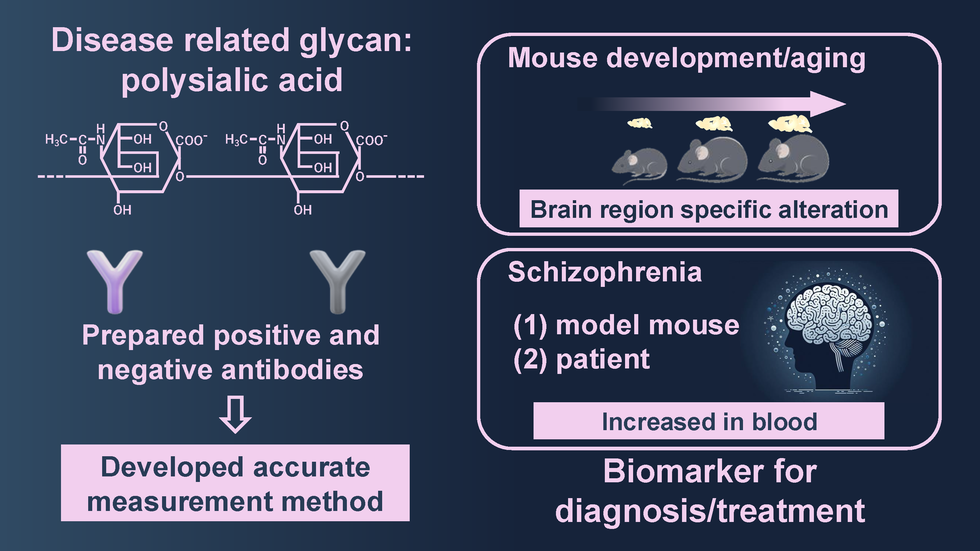
Biology
July 15, 2025
Simple schizophrenia diagnosis using an acidic glycan in the blood
A group from Nagoya University in Japan has developed a simple, accurate, and sensitive method for measuring polysialic acid, a unique acidic glycan found in the brain. Polysialic acid fluctuates in the blood of patients with psychiatric disorders. As it is increased in schizophrenia patients, the glycan represents a potential diagnostic tool and possible target for treatment.
Polysialic acid is a unique acidic glycan that exists mainly in the regions of the brain involved in memory and emotion. However, it is also found in the blood at a certain level, and changes are found in the blood of patients with mental disorders and even cancer. Being able to accurately measure the blood levels of the glycan could improve the diagnosis of these diseases, but its unique physical and chemical properties make accurate quantification difficult.
The group’s new technique is based on a sandwich ELISA, a method that uses a pair of antibodies, a capture antibody and a detection antibody, that recognize the different structure of polysialic acid and bind to it, ‘sandwiching’ it. Their technique uses both positive and negative antibodies as detection antibodies. The negative antibody is a point-mutated positive antibody that completely loses its binding activity without any conformational changes. The subtracted values for the negative from the positive antibodies minimize a non-specific binding that is often problematic for glycan-specific antibodies, maximizing the accuracy of measuring polysialic acid.
Their technique showed an increase in the amount of polysialic acid in blood samples of schizophrenia, but not in those of chronic inflammatory demyelinating polyneuropathy patients. Intriguingly, the blood levels were different between the diseases, suggesting that blood samples could be used for differentiating them.
The group sees their research as having applications to other conditions. “Cancer cells release exosomes and other substances that enter the bloodstream to increase the concentration of polysialic acid,” corresponding author Chihiro Sato, Professor of the Institute for Glyco-core Research (iGCORE) at Nagoya University, said. “Finding out more about the mechanism underlying the increase in blood polysialic acid levels in various diseases could lead to new treatment options for these diseases.”
The study, "A highly sensitive quantitative method of polysialic acid reveals its unique changes in brain aging and neuropsychiatric disorders," was published in the journal Scientific Reports on May 30, 2025, at DOI: 10.1038/s41598-025-02583-x.
Authors:
Masaya Hane, Ayane Naramura, Kaito Hayakawa, Chikara Abe, Takahiro Nakagawa, Itaru Kushima, Soma Furukawa, Yuki Fukami, Keisuke Ikegami, Kazumasa Saigoh, Susumu Kusunoki, Masahisa Katsuno, Norio Ozaki, Ken Kitajima, and Chihiro Sato
Media contact:
International Communications Office, Nagoya University
Email: icomm_research@t.mail.nagoya-u.ac.jp
Top image:
Simple schizophrenia diagnosis using an acidic glycan in the blood
(Credit: Masaya Hane & Chihiro Sato)